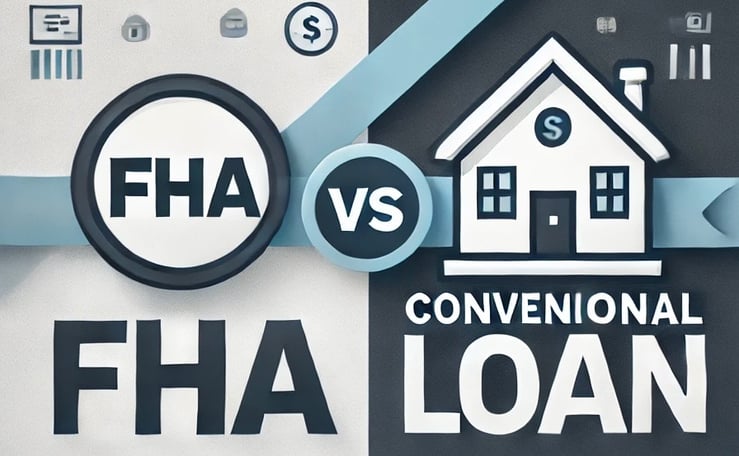FHA vs. Conventional Loans: Choosing the Right Path to Homeownership
When it comes to purchasing a home, understanding your financing options is crucial. Two of the most common types of loans are FHA loans and conventional loans. Each has its unique features, benefits, and eligibility requirements. Let’s dive into the key differences to help you decide which loan might be the best fit for your home-buying journey.
10/13/20242 min read


What is an FHA Loan?
FHA Loans (Federal Housing Administration Loans): FHA loans are designed to make homeownership accessible for low- to moderate-income borrowers. Here are some key features:
Lower Down Payment: FHA loans allow down payments as low as 3.5%, making it easier for first-time buyers to enter the market.
Flexible Credit Requirements: These loans are more forgiving of lower credit scores. Borrowers can qualify with scores as low as 580 with a 3.5% down payment. Those with scores between 500 and 579 may qualify with a larger down payment of 10%.
Mortgage Insurance: FHA loans require both an upfront mortgage insurance premium (UFMIP) and ongoing monthly mortgage insurance premiums (MIP). This protects lenders in case of default but does add to your monthly costs.
Loan Limits: FHA loans have limits based on the region, which can be lower than conventional loan limits, particularly in high-cost areas.
What is a Conventional Loan?
Conventional Loans: These are traditional mortgages that are not backed by the government. They are often offered by private lenders and come in two types: conforming and non-conforming. Key features include:
Higher Down Payment: Conventional loans typically require a down payment of at least 5%, though some programs may allow as little as 3% for first-time buyers.
Credit Score Requirements: Generally, conventional loans require a higher credit score, often around 620 or higher, making them less accessible for those with lower scores.
Private Mortgage Insurance (PMI): If you put down less than 20%, you will typically be required to pay PMI, which protects the lender if you default. Unlike FHA loans, PMI can be canceled once you reach 20% equity in your home.
Loan Limits: Conventional loans can also have limits based on the county where the property is located, but they often allow for higher loan amounts than FHA loans in many areas.
Key Differences Between FHA and Conventional Loans
Down Payment: FHA loans allow for a lower down payment (as low as 3.5%), while conventional loans generally require at least 5%.
Credit Requirements: FHA loans are more lenient with credit scores, making them accessible to a broader range of borrowers, whereas conventional loans typically require higher credit scores.
Mortgage Insurance: FHA loans have both upfront and ongoing mortgage insurance premiums, while conventional loans may only require PMI if your down payment is less than 20%, and this can be removed once you reach 20% equity.
Loan Limits: FHA loan limits may be lower than those for conventional loans, particularly in higher-cost markets.
Which Loan is Right for You?
Choosing between an FHA loan and a conventional loan depends on your financial situation, homeownership goals, and credit profile. Here are a few considerations:
Choose FHA If: You have a lower credit score, minimal savings for a down payment, or are a first-time homebuyer looking for more lenient qualifying criteria.
Choose Conventional If: You have a solid credit score, can afford a higher down payment, and want more flexibility with mortgage insurance and loan limits.
Conclusion
Understanding the differences between FHA and conventional loans is essential for any prospective homebuyer. Each loan type offers distinct advantages that can align with your financial situation and homeownership goals. Take the time to assess your options, consult with a mortgage professional, and choose the loan that best fits your needs. Happy house hunting!


